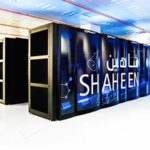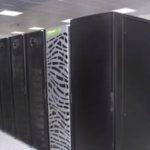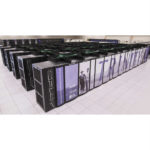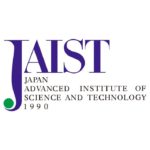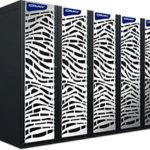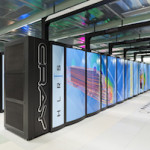KAUST has opened a call for proposals for COVID-19 research to be run on the Shaheen II supercomputer and related resources. Shaheen II joins many supercomputers around the world that have recently reallocated a portion of their resources to campaigns to model the pandemic. “In related news, “COVID-19 and High Performance Computing” is the subject of a special session of the now virtualized ISC 2020 conference, according to Professor David Keyes, Director of KAUST’s Extreme Computing Research Center, who is the Program Chair of the event.”
Supercomputing the San Andreas Fault with CyberShake
With help from DOE supercomputers, a USC-led team expands models of the fault system beneath its feet, aiming to predict its outbursts. For their 2020 INCITE work, SCEC scientists and programmers will have access to 500,000 node hours on Argonne’s Theta supercomputer, delivering as much as 11.69 petaflops. “The team is using Theta “mostly for dynamic earthquake ruptures,” Goulet says. “That is using physics-based models to simulate and understand details of the earthquake as it ruptures along a fault, including how the rupture speed and the stress along the fault plane changes.”
DOE INCITE program seeks proposals for 2021
The DOE INCITE program has issued its Call for Proposals. “Open to researchers from academia, industry and government agencies, the INCITE program is aimed at large-scale scientific computing projects that require the power and scale of DOE’s leadership-class supercomputers. The program will award up to 60 percent of the allocable time on Summit, the OLCF’s 200-petaflop IBM AC922 machine, and Theta, the ALCF’s 12-petaflop Cray XC40 system.”
India’s Ministry of Earth Sciences Deploys two Cray XC40 Supercomputers
Today Cray announced that the Ministry of Earth Sciences in India has deployed a pair of Cray XC40 supercomputers with Cray ClusterStor storage systems. The combined systems are the largest supercomputing resource in India, and extend Cray’s leadership position in the weather forecasting and climate research communities. “The two new Cray systems are major steps forward for MoES, and allows us to stand tall in the international weather and climate communities.”
Trinity Supercomputer lands at #7 on TOP500
The Trinity Supercomputer at Los Alamos National Laboratory was recently named as a top 10 supercomputer on two lists: it made number three on the High Performance Conjugate Gradients (HPCG) Benchmark project, and is number seven on the TOP500 list. “Trinity has already made unique contributions to important national security challenges, and we look forward to Trinity having a long tenure as one of the most powerful supercomputers in the world.” said John Sarrao, associate director for Theory, Simulation and Computation at Los Alamos.
Video: Australian Bureau of Meteorology moves to a new Data Production Service
Tim Pugh from the Australian Bureau of Meteorology gave this talk at the DDN User Group in Denver. “The Bureau of Meteorology, Australia’s national weather, climate and water agency, relies on DDN’s GRIDScaler Enterprise NAS storage appliance to handle its massive volumes of research data to deliver reliable forecasts, warnings, monitoring and advice spanning the Australian region and Antarctic territory.”
JAIST in Japan installs Cray XC40 Supercomputer
Today Cray announced the Japan Advanced Institute for Science and Technology (JAIST) has put a Cray XC40 supercomputer into production. The Cray XC40 supercomputers incorporate the Aries high performance network interconnect for low latency and scalable global bandwidth, as well as the latest Intel Xeon processors, Intel Xeon Phi processors, and NVIDIA Tesla GPU accelerators. “Our new Cray XC40 supercomputer will support our mission of becoming a premier center of excellence in education and research.”
Argonne to Install 1.5 Petaflop Cray CS400 Cluster
Today Cray announced a contract to deliver a Cray CS400 cluster supercomputer to the Laboratory Computing Resource Center (LCRC) at Argonne National Laboratory. The new Cray system will serve as the Center’s flagship cluster, and in continuing with LCRC’s theme of jazz-music inspired computer names, the Cray CS400 system is named “Bebop.”
Shaheen Supercomputer at KAUST Completes Trillion Cell Reservoir Simulation
Over at KAUST News, Nicholas G. Demille writes that the Shaheen supercomputer has completed the world’s first trillion cell reservoir simulation. A Saudi Aramco research team led by fellow Ali Dogru conducted the reservoir simulation using Shaheen and the company’s proprietary software TeraPOWERS. The Aramco researchers were supported by a team of specialists from the KAUST Supercomputing Core Lab, with the work rendering imagery so detailed that it changed the face of natural resource exploration.
Cray Sets New Supercomputing Record with HLRS and Ansys
ANSYS, HLRS and Cray have pushed the boundaries of supercomputing by achieving a new supercomputing milestone by scaling ANSYS software to 172,032 cores on the Cray XC40 supercomputer, hosted at HLRS, running at 82 percent efficiency. This is nearly a 5x increase over the record set two years ago when Fluent was scaled to 36,000 cores. “This record-setting scaling of ANSYS software on the Cray XC40 supercomputer at HLRS proves that close collaborations with customers and partners can produce exceptional results for running complex simulations,” said Fred Kohout, senior vice president and chief marketing officer at Cray.

